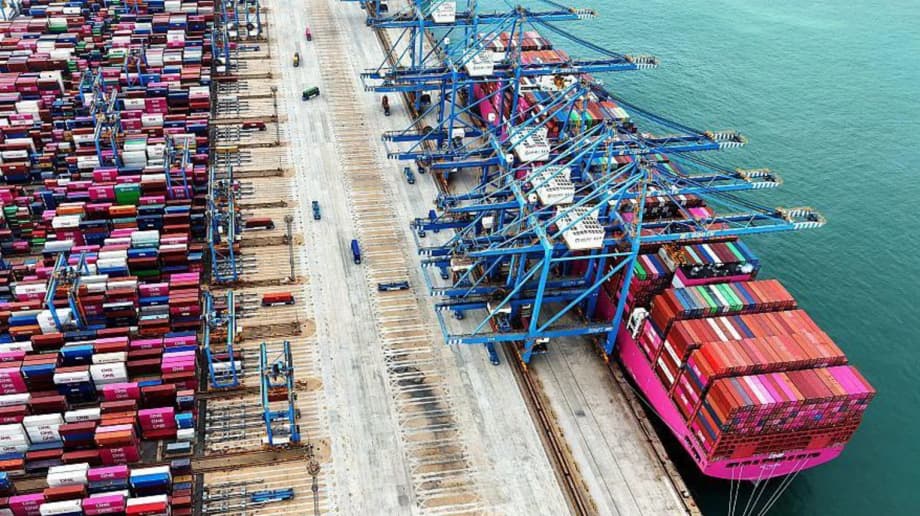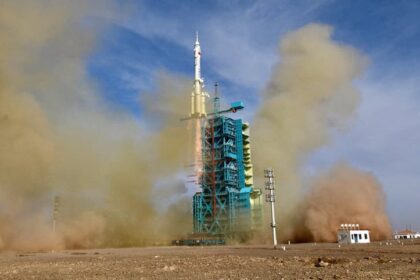Tariff threats collide with rare earth controls
China accused the United States of double standards after President Donald Trump threatened an additional 100 percent tariff on Chinese goods, a move framed as retaliation for Beijing’s tightened export controls on rare earth minerals. The latest exchange revived fears of a fresh trade war between the world’s two largest economies, rattled global markets, and cast new doubt on a planned late October meeting between Trump and Chinese President Xi Jinping in South Korea.
- Tariff threats collide with rare earth controls
- What triggered the latest flare up?
- How 2025 revived the trade war
- Economic stakes for both countries
- Rare earths: why these minerals matter
- Market reaction and supply chain shifts
- Global ripple effects and allies responses
- Where diplomacy stands now
- What could happen next?
- What to Know
Beijing’s new rules, announced last week, expand licensing and scrutiny on rare earths, a group of minerals used in everything from smartphones to fighter jets. Chinese officials defended the measures as national security policy and said Washington had stretched that same concept to justify sweeping export restrictions and other curbs on Chinese firms. A spokesperson for China’s commerce ministry warned of corresponding measures if the United States implements new duties and urged dialogue instead of threats.
Trump’s response was swift. He said he could double down with tariffs that would take many imports into triple digits, and he raised the prospect of US export controls on critical software. Markets swung hard. US equities suffered a sharp selloff on Friday, then rebounded Monday after the White House signaled talks were continuing and the president said relations could still improve. The S&P 500 saw its worst day since April on Friday, then posted its biggest one day gain since May to recoup a significant chunk of losses. Asian markets closed lower on Monday, reflecting the risk of further escalation.
Amid the turbulence, Trump also suggested there might be no reason to meet Xi, before softening his tone in a weekend post that emphasized a desire to help rather than harm China. Plans for a leader level meeting remain on the calendar, though the atmosphere is tense and any misstep could upend the schedule.
What triggered the latest flare up?
The immediate spark was China’s decision to broaden its rare earths export controls. Authorities added more elements to the controlled list, tightened approvals for users in semiconductors and other advanced manufacturing, and introduced strict licensing thresholds. Analysts say foreign companies will need Chinese approval if even a small share of a product’s value traces to rare earths processed in China. Beijing also said it would deny export licenses where materials would support foreign militaries.
Rare earths are not rare in geology, but refining and magnet production are concentrated in China. Global manufacturers, including defense contractors, automakers, and chip firms, rely heavily on this supply chain. The new controls raise compliance costs and inject uncertainty into production planning for sectors that already faced pressure from earlier US restrictions on advanced technologies.
Tensions had been building on several fronts. The United States introduced new export limits on Chinese firms late in September, weighed curbs on aircraft parts sales, and signaled possible constraints on flight paths for Chinese airlines on some US routes. Each move was matched by countermoves from Beijing, including tighter controls on critical minerals, antitrust probes involving US companies, and plans for extra port fees on vessels linked to the other side. The wider pattern is familiar: one side cites national security, the other replies with a measure of its own, and business gets caught in the middle.
How 2025 revived the trade war
After a pause in late summer, the trade conflict accelerated again this fall. It caps a year of rolling confrontation. In January and February, tariffs rose across a wide range of goods, with Washington imposing a new universal tariff and raising levies on Chinese imports. Beijing responded with duties on US agricultural and industrial products, and with export controls on metals and minerals used in high tech manufacturing. By early spring, the headline tariff rate on some categories reached levels that, in effect, shut down trade flows for those items.
The escalation did not stop at customs. Washington pressed allies to tighten technology sales to China. US officials revoked some student visas and urged companies to restrict shipments of sensitive equipment. Beijing opened antitrust investigations involving US-linked firms and adjusted its own licensing environment. By April, both sides had stacked tariffs and non tariff measures, pushing effective duties on many goods to levels far above pre 2018 norms.
A series of European meetings offered brief relief. Negotiators met in Geneva (May), London (June), Stockholm (July), and Madrid (September). The first round produced a 90 day tariff pause that lowered reciprocal tariffs from extreme peaks, with effective rates on many Chinese goods dropping to roughly the 30 percent range. Subsequent rounds focused on export licensing and sensitive sectors such as rare earths, semiconductors, and pharmaceuticals. None resolved the core disputes, but each helped buy time before the next flare up.
Economic stakes for both countries
Tariffs are taxes paid by importers, which often pass costs to businesses and consumers. Policy groups tracking tariff burdens in 2025 estimate average US rates on Chinese goods in the range of the low 50s to high 50s as a percentage, depending on the method and the date. China’s average duties on US goods are roughly a third by similar measures. Effective rates can be much higher on specific categories when multiple policies stack on top of each other.
Independent analyses show broad costs. One study of the combined tariff regime in 2025 estimated an average tax increase of about 1,300 dollars per US household this year, potentially rising in 2026 if more measures take effect. On a macro level, researchers estimate a modest hit to US GDP from tariffs alone, with bigger losses when foreign retaliation and supply chain adjustments are included. Lower and middle income households, which spend more of their income on goods, tend to feel tariffs more acutely than top earners.
Global forecasts reflect both the resilience of firms and the risk of policy shocks. The International Monetary Fund recently upgraded its 2025 growth outlook to 3.2 percent, citing milder than expected tariff effects, flexible supply chains, and supportive financial conditions. It warned, however, that a renewed escalation between the United States and China could trim growth in 2026 and beyond, with a more severe scenario producing a much larger global drag by 2027. The IMF kept China’s 2025 forecast near the mid 4 percent range, pointing to persistent property sector strains, while projecting US growth near 2 percent.
Rare earths: why these minerals matter
Rare earth elements sit at the heart of modern industry. They enable high strength magnets used in electric motors and wind turbines, polishing compounds for smartphone glass, catalysts in petrochemical refining, and critical parts in advanced weapons systems. China controls a large share of mining and an even larger share of refining capacity, which gives Beijing significant influence over prices and availability.
The defense sector is especially exposed. Magnets and other components using rare earths appear in fighter aircraft, guided munitions, radars, submarines, and drones. A targeted licensing regime that excludes foreign militaries or their suppliers can slow production schedules and raise costs for contractors and allied defense industries.
Gracelin Baskaran, a critical minerals scholar at the Center for Strategic and International Studies, said the new export rules have a clear strategic focus. She warned they could impair military readiness if they persist through the medium term.
It undermines the development of the defense industrial base at a time of rising global tension. It is a very powerful negotiating tactic because it touches national security.
US officials and investors have spent years trying to diversify supply. The Pentagon backed new refining capacity and supplier agreements within North America, Australia, and allied countries. Mining projects and magnet plants take time to build, and environmental permitting can add more years. That lag is one reason why market participants view China’s licensing power as a near term pressure point.
Jeremy Siegel, professor emeritus of finance at the University of Pennsylvania, argued that the United States should have moved sooner to insulate itself from potential supply squeezes.
It is scandalous that we do not have a rare earths strategic reserve, that China refines 90 percent of these materials. Where were we?
Market reaction and supply chain shifts
Investors jolted back and forth as tariffs and export controls took turns in the headlines. US stocks fell sharply on Friday after the 100 percent tariff threat, erasing more than a trillion dollars in market value, then rallied on Monday as officials signaled that talks were ongoing and the leader level meeting might still proceed. Asia Pacific indices finished lower to start the week, reflecting exposure to electronics, autos, and chipmaking supply chains that depend on cross border sourcing from China.
Safe haven trades showed investors hedging risk. Gold and silver prices surged as traders looked for insurance against policy shocks. Digital assets also swung widely. The swings echoed moves seen earlier in 2025 during the spring escalation, when tariff headlines made broad equity indices highly sensitive to even small signs of de escalation or saber rattling.
Trade patterns are shifting underneath the volatility. Chinese exporters have grown sales in Southeast Asia, Latin America, and Africa even as shipments to the United States declined for multiple months. That pivot is visible in customs data showing double digit gains to ASEAN countries and other regions. For multinational manufacturers, the search for supply diversification accelerated, with more orders routed through Vietnam, Malaysia, Mexico, and Eastern Europe. Some of that shift reflects tariffs, while some reflects companies spreading risk after pandemic era disruptions.
Global ripple effects and allies responses
Economic aftershocks are not confined to the United States and China. A new round of port fees on ships linked to each other’s maritime trade is rippling through global logistics. Officials in Beijing said they informed Washington before announcing rare earths controls, while both capitals prepared to exempt certain categories or firms. Yet even limited exemptions cannot fully shield global shippers that move through US or Chinese ports.
Other governments are recalibrating. Mexico, a major destination for Chinese auto exports, floated a large tariff on those vehicles after pressure from Washington. In Europe, officials rolled out higher duties on steel to counter dumping and strengthen their position in talks with both Washington and Beijing. Canada, Brazil, and Mexico took steps to shield their domestic steelmakers as supply chains adjusted to new pricing and quotas. India, facing US tariffs linked to its purchases of Russian oil, held high profile meetings with Chinese counterparts as it weighed its own tradeoffs.
The net effect is a more fragmented trade landscape, where policy choices in Washington and Beijing drive decisions in boardrooms and ministries from Seoul to Brussels to Mexico City. Allies and partners face pressure to take sides or to negotiate carve outs that allow industries to survive in a difficult environment.
Where diplomacy stands now
Behind the tariff headlines sits an intense diplomatic track. Four rounds of talks in Europe have served as a stabilizer when escalation threatened to spiral. The first session in Geneva (May) produced a 90 day pause and effective rate reductions on both sides, followed by deeper technical discussions in London (June), Stockholm (July), and Madrid (September). Working groups tackled export licensing, rare earth shipments, consumer technology platforms, and fentanyl enforcement. Each meeting eased immediate pressure while leaving hard problems unresolved.
Chinese officials continue to argue that seeking talks while threatening new measures is an improper approach. A spokesperson for the commerce ministry said Beijing would respond in kind if new triple digit tariffs take effect and reiterated that China does not seek a tariff fight.
Resorting to tariff threats is not the right way to engage with China. Our position is consistent: we do not want a tariff war, but we are not afraid of one.
US officials present the pressure campaign as a way to secure changes in trade practices and choke off illicit synthetic opioids. Treasury Secretary Scott Bessent has kept the door open to further dialogue and maintained that leader level engagement remains possible this month.
The talks went into overdrive over the weekend, and the Trump Xi meeting is still likely later this month. We want a durable arrangement that protects US interests and supports stability.
Trump himself offered a mixed message, pairing hard line tariff threats with a conciliatory note on social media addressed to Xi.
Do not worry about China, it will all be fine. Highly respected President Xi just had a bad moment. He does not want a Depression for his country, and neither do I. The USA wants to help China, not hurt it.
What could happen next?
The calendar matters. The White House has said a 100 percent tariff could take effect on November 1 if talks stall. China’s expanded rare earths licensing regime takes greater effect in the weeks ahead, with additional controls on technologies used in mining, separation, magnet making, and recycling. Port fee measures on each other’s vessels are rolling out in stages and could add friction in shipping lanes that carry a large share of global trade.
Several scenarios lie ahead:
Short extension and continued talks
Both sides could extend the truce and narrow the dispute to specific sectors. Negotiators could trade limited concessions, such as targeted export licenses for commercial technologies in exchange for more predictable rare earth shipments. This path would not resolve structural disagreements, but it would reduce immediate shocks for manufacturers and farmers.
Tariffs trigger and partial backdown
If the 100 percent tariff takes effect, Beijing has signaled it will respond in kind. The likely follow up would be a period of intense market volatility, followed by carve outs and exemptions to limit damage. That pattern played out earlier in 2025 when extreme headline rates were announced but later softened through temporary waivers and pauses.
Shift to non tariff measures
Even without fresh tariff spikes, both sides can escalate with non tariff tools. China can slow or speed export licenses, expand investigations touching foreign firms, or adjust port fee schedules. The United States can tighten export controls, slow regulatory approvals, or apply pressure through allies on financing and standards. These actions are harder to track and plan around than tariff tables, which raises uncertainty for global supply chains.
Corporate hedging
Companies are pursuing insurance against policy shocks. That includes building buffer inventories of critical inputs, signing long term offtake contracts with non Chinese suppliers, qualifying second and third manufacturing sites, and redesigning products to reduce dependence on controlled materials. The Defense Department has been particularly active in securing domestic sources of rare earths and magnets, while commercial firms adjust sourcing for batteries, electronics, and autos.
What to Know
- Trump threatened an additional 100 percent tariff on Chinese goods after Beijing expanded rare earths export controls.
- China called the move double standards and warned of countermeasures while urging dialogue instead of threats.
- Markets swung sharply, with a Friday selloff followed by a Monday rebound as officials signaled talks would continue.
- Rare earths are central to defense and high tech manufacturing; China dominates refining and magnet production.
- Average tariff rates between the two countries remain far above pre 2018 levels, with stacked measures pushing some products over 100 percent.
- The IMF raised its 2025 global growth outlook but warned that renewed escalation could slow output in 2026 and beyond.
- Negotiations in Geneva, London, Stockholm, and Madrid delivered temporary pauses but did not resolve structural disputes.
- Port fees on each other’s ships and tighter export controls add new pressure points beyond standard customs duties.
- A leader level meeting in South Korea is still on the calendar, though tensions could derail it.
- Key dates approach, including a possible November 1 US tariff action and added Chinese licensing rules later in the year.












